On my AliExpress Reviews channel, I recently disassembled and reviewed an interesting Zigbee module with an 80A CT Clamp for Energy Monitoring. It’s currently deployed in my server room, clamping the live wire of my main power strip feeding power to the devices I’ve setup there. It operates okay, but is used solely for power monitoring and doesn’t have a relay for controlling devices.
Digging through AliExpress a few weeks backs, I found an interesting 30A Zigbee Smart Switch with Energy Monitoring sold by some company named Colorock so I decided to buy one for testing. It’s intended for high power appliances, such as large fridges, heaters, tumble dryers etc.
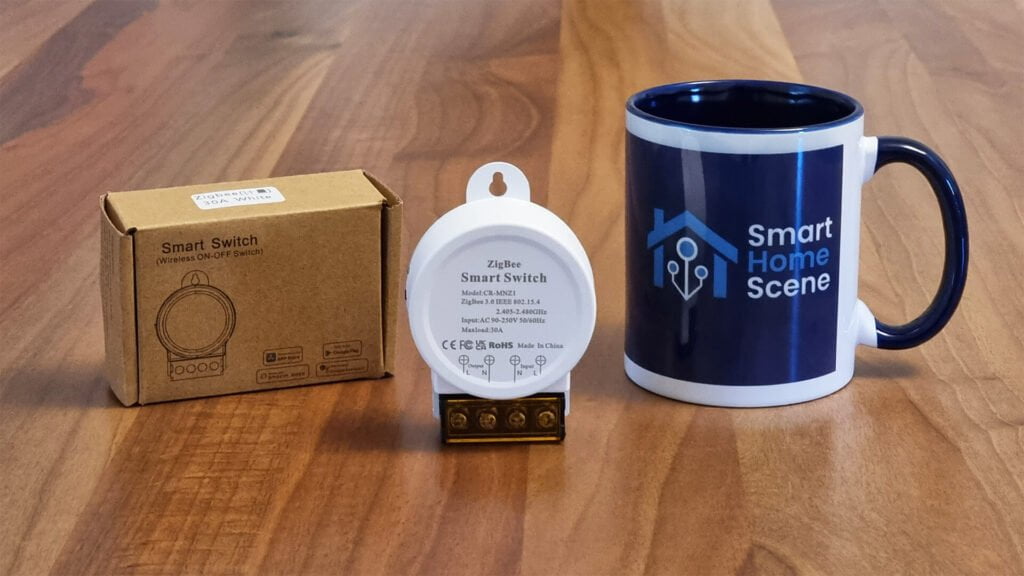
As usual, I will teardown the device, integrate it in Home Assistant and do some tests to verify it’s capabilities. This relay is relatively cheap, going for $13.5 on AliExpress and a bit more on some Amazon stores.
Technical Specification
- Model: CR-MNZ1
- Maximum Load: 30A
- Voltage: 90-250V AC
- Product Size: 88x60x30mm
- Communication: ZigBee3.0
- Power On State: On/Off/Restore
- Energy Monitoring: Voltage (V), Current (A), Power (W)
Disassembly
This relay came packaged in cheap cardboard box with a manual and the device inside. Package was smushed, but the device intact.
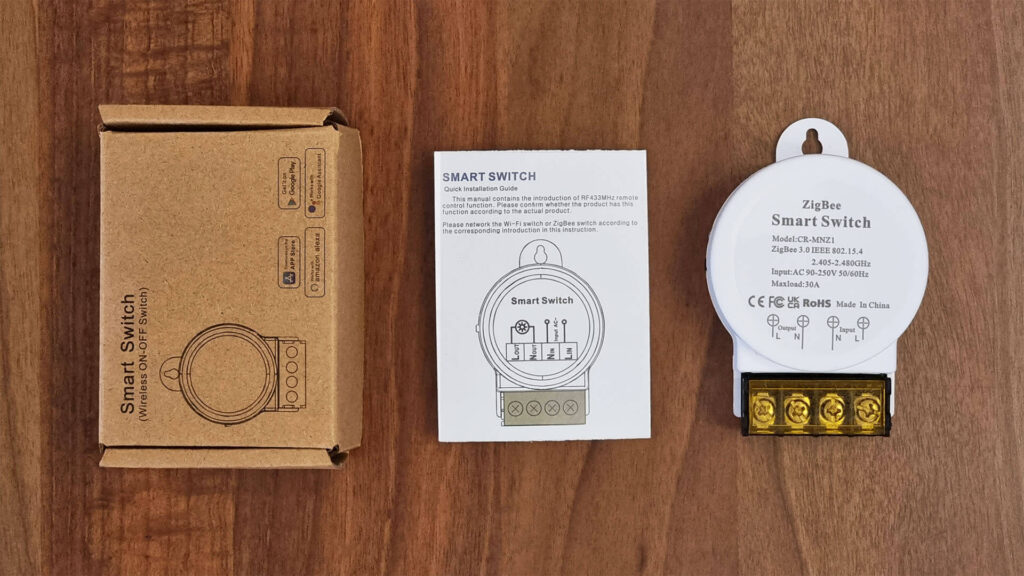
The Colorock 30A relay has 4 terminals at the bottom, L-N In and L-N Out, as simple as they come. These are high quality screw terminals and are larger than you normally would encounter in these types of switches. The body of the device is round with a hole at the top for screw mounting.
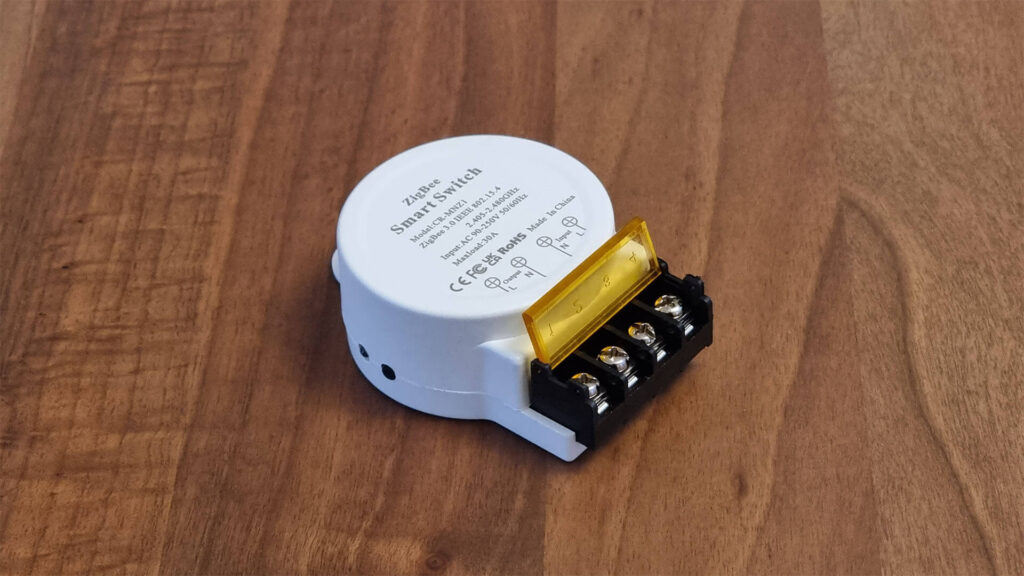
On the backside of the case, you can see 3 screws holding the front and back together. Sticking out of the side is the pairing button and an indicator LED. This 30A relay is a bit larger than your usual smart switch, yet it’s still within reasonable boundaries.
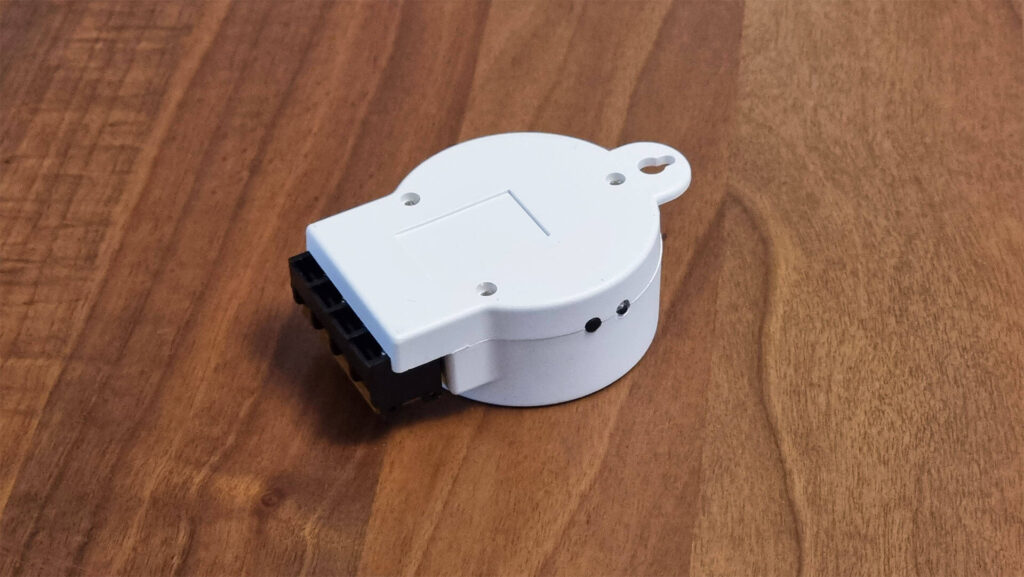
Getting inside was fairly easy. My first observation is the PCB is very neat, clean and professionally done. It’s shape is purposefully cut to fit the round case of this 30A relay.
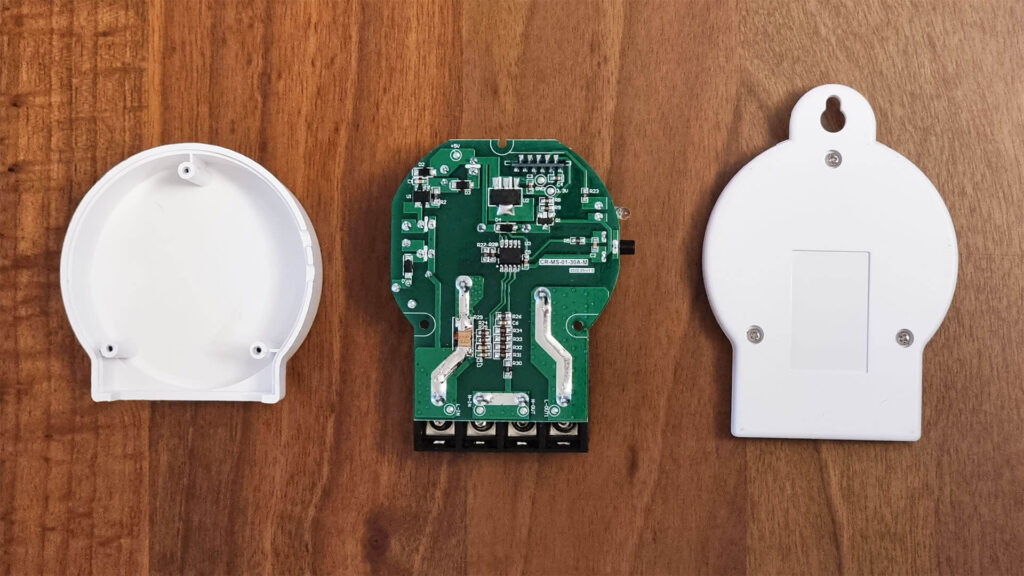
Flipping over the PCB, I can understand why this smart switch is larger than most. That relay is HUGE. On top of that, they installed a 40A version instead of 30A like advertised. It was manufactured by some Chinese company out of Shenzhen, and even though on paper it sound superb it’s actual operation will of course need to be verified.
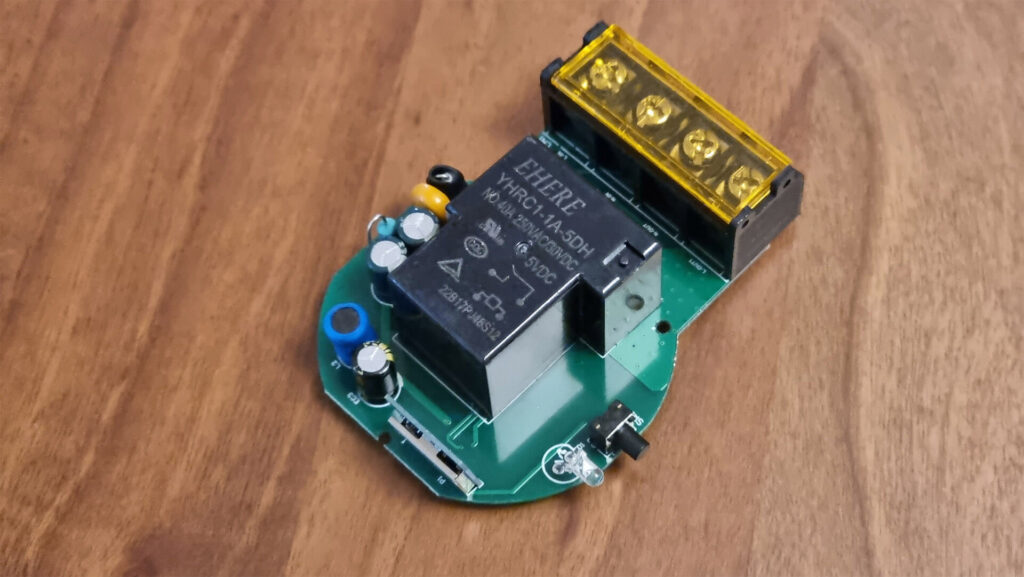
Zigbee communication is handled by a Tuya ZT2S Module [Datasheet], which contains a low-power 32-bit CPU, 1024-KB flash memory, 64-KB RAM, and rich peripherals. The device operates as a Zigbee router with this module.
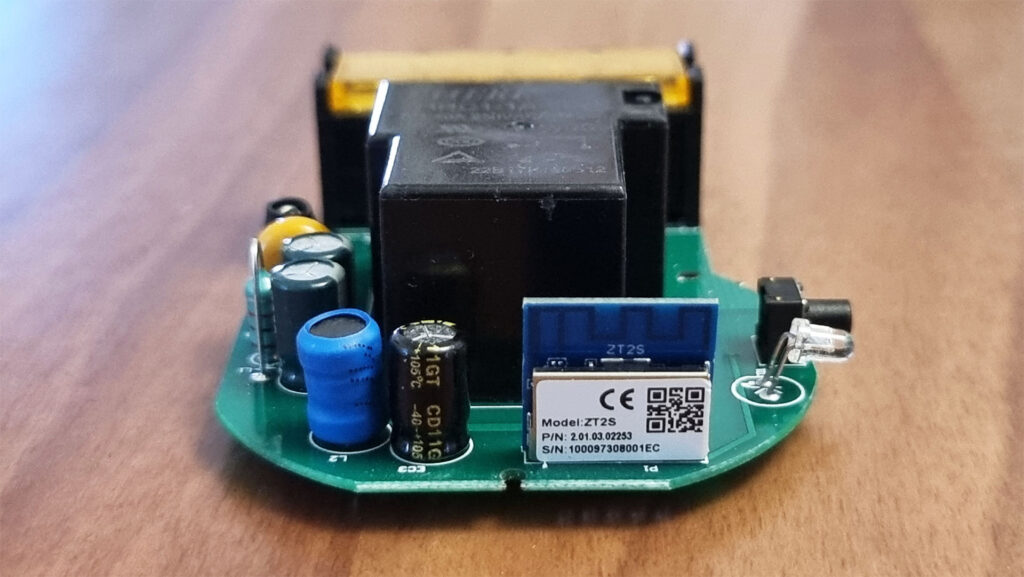
Installation
Installing the Colorock 30A Zigbee Smart Relay is as simple as it can be:
- Connect your AC input L-wire to the L-In terminal
- Connect your AC input N-wire to the N-In terminal
- Connect your output L-wire to the L-Out terminal
- Connect your output N-wire to the N-out terminal
For the completely inexperienced, there is a simple diagram in the manual that you can follow.
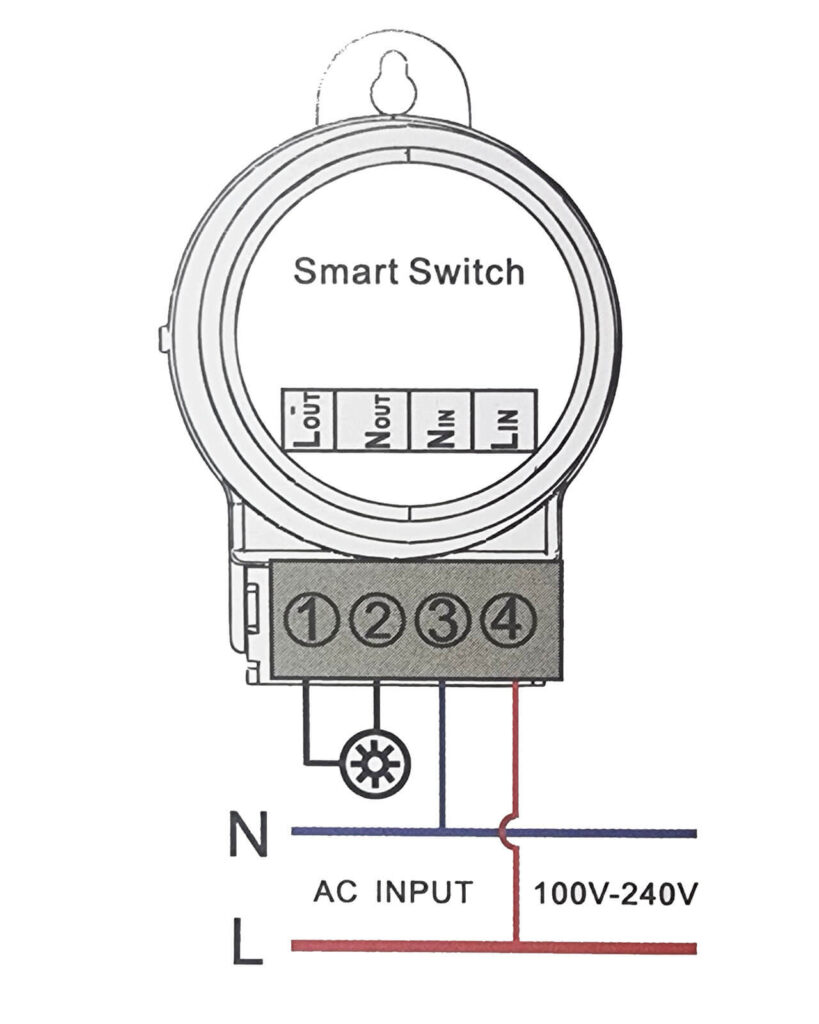
Home Assistant Integration
The Colorock 30A Zigbee Relay is officially supported in both Zigbee2MQTT and ZHA. To pair the device to your coordinator, press and hold the small button on the side for ~7 seconds until the LED starts flashing.
Zigbee2MQTT
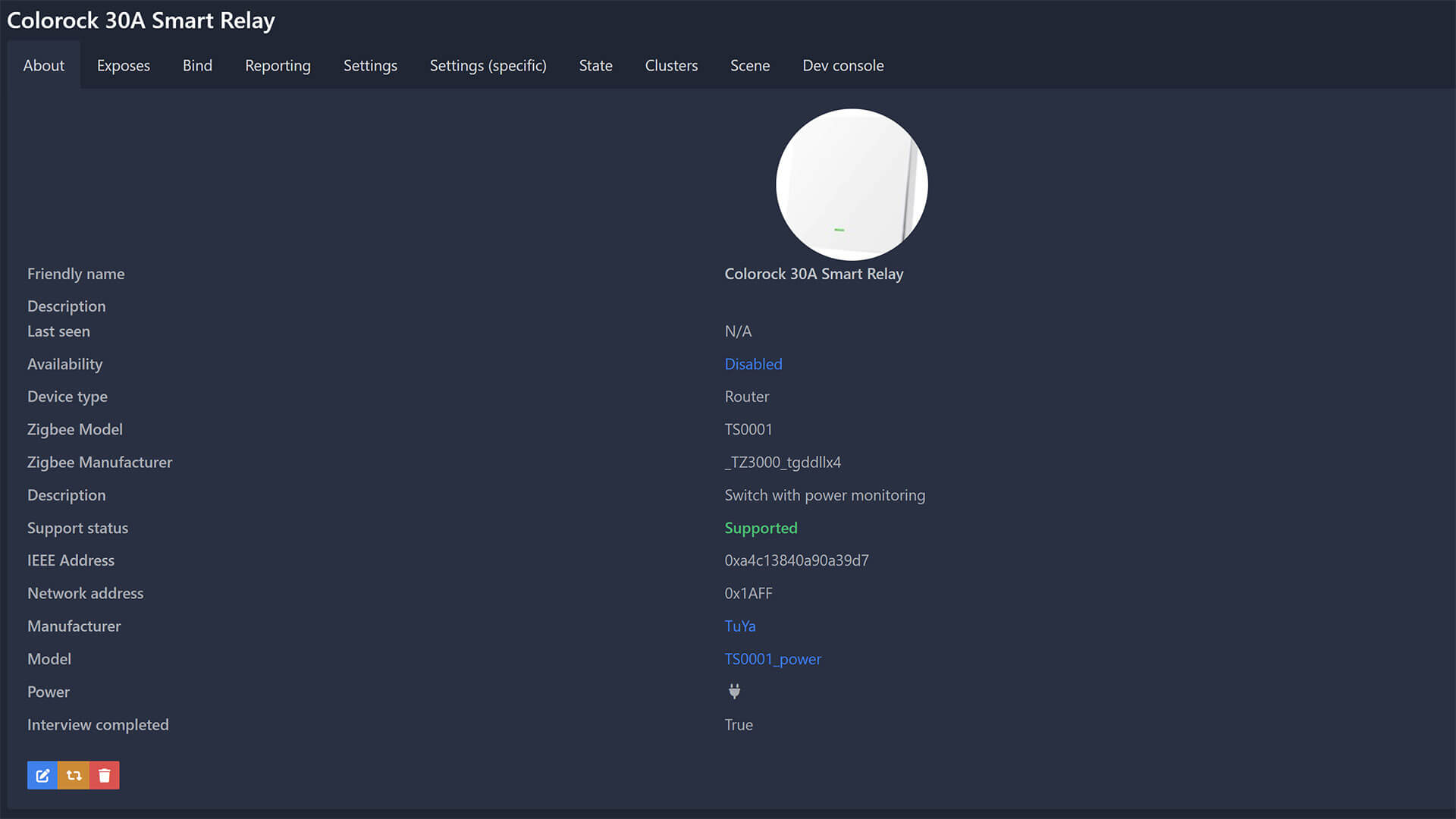
Once paired to Zigbee2MQTT, the Colorock 30A is identified as Model TS0001_power and Manufacturer _TZ3000_tgddllx4. This relay reuses the Tuya TS0001 herdsman converter, so the photo is from a Tuya 1 Gang Switch.
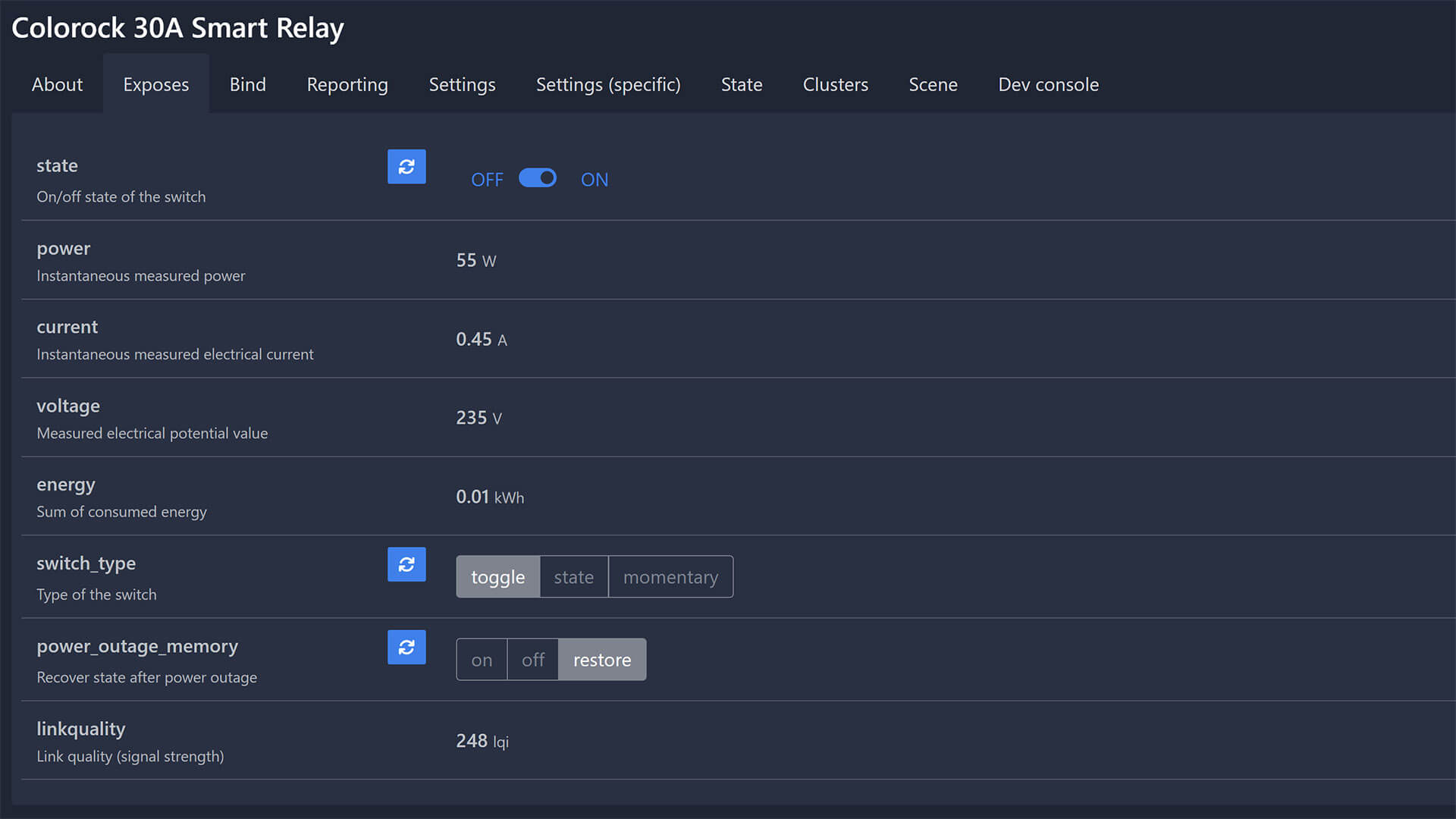
It exposes a bunch of entities in Home Assistant through Zigbee2MQTT:
- switch: Toggle On/Off
- power: reading in W
- current: reading in A
- voltage: reading in V
- energy: Sum of consumed energy in kWh
- switch_type: Toggle, State and Momentary
- power_outage_memory: Return to last state in case of power failure
- linkquality: Signal Quality in LQI
Considering this specific Herdsman Converter is reused from a generic Tuya 1 Gang Switch, the switch_type setting has no effect on the Colorock 30A relay. It stays in toggle mode no matter which type you set it too.
If needed, energy values can be calibrated from the Zigbee2MQTT Settings (specific) menu as well as set the decimal precision of the measurements: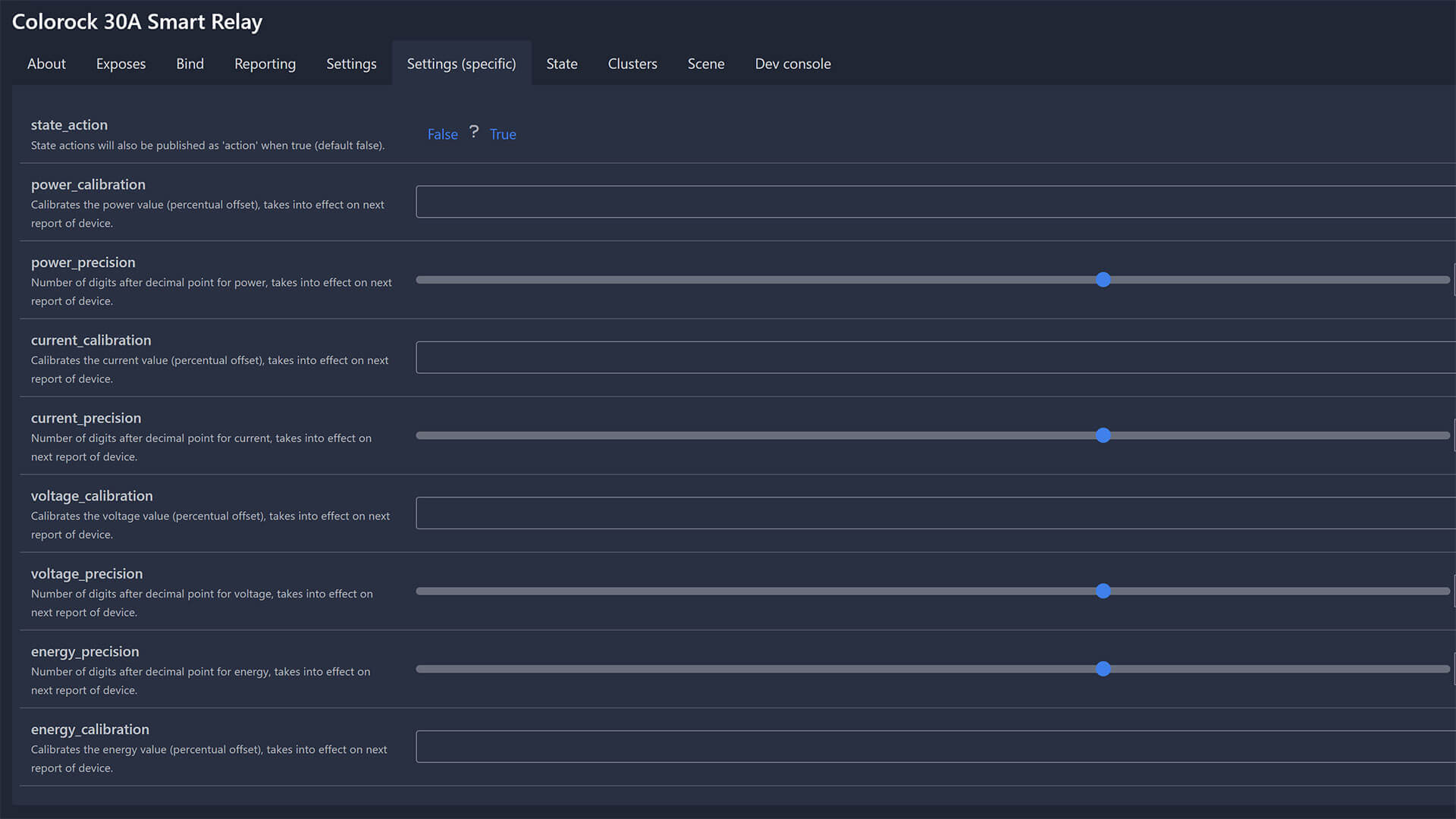
ZHA
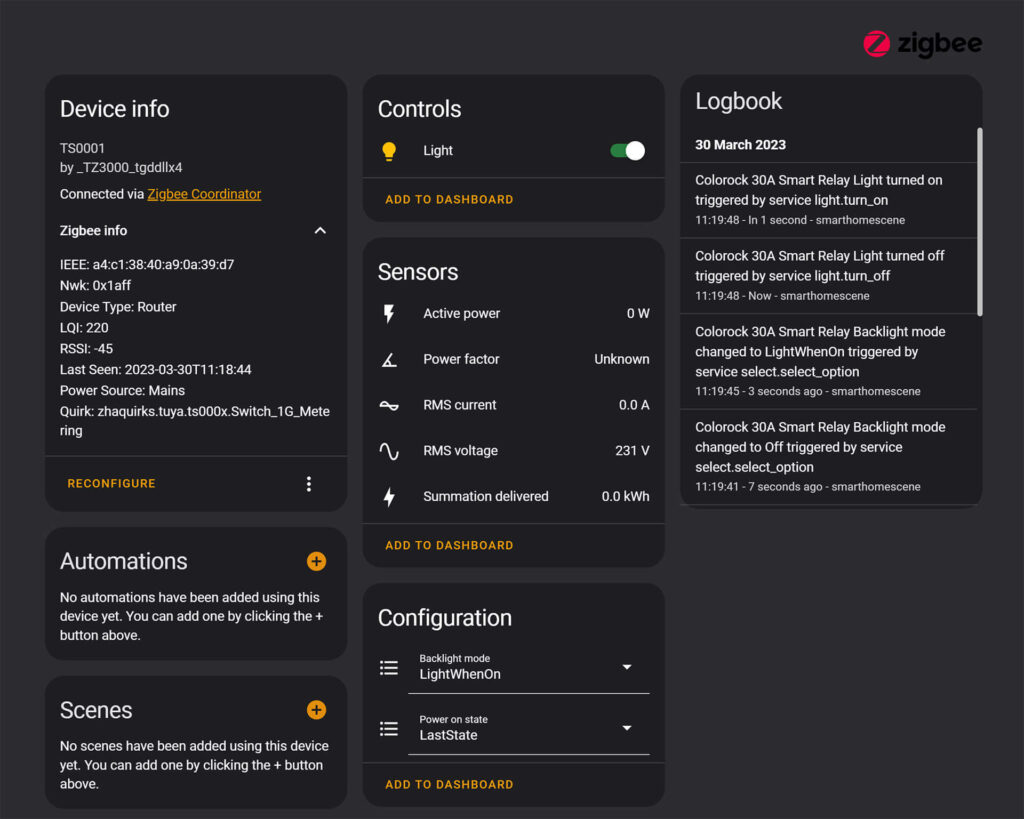
Pairing the device to ZHA, it’s identified as model TS0001 with manufacturer _TZ3000_tgddllx4 with a custom quirk pre-applied, labelled tuya.ts000x.Switch_1G_Metering. Device is correctly identified as a router.
Some settings are incorrectly loaded together with the quirk, such as the Backlight mode setting. This is used on the TS0001 1 Gang Tuya switch as an indicator, which this relay doesn’t have. The main toggle entity is also added in the light domain instead of switch, but this can be easily changed if needed.
I verified the Power on state settings works as intended, either set to On, Off or LastState.
Usage and Testing
To verify the real-life usage of this Colorock 30A Relay, I decided to connect it to an AC I have deployed in my office:
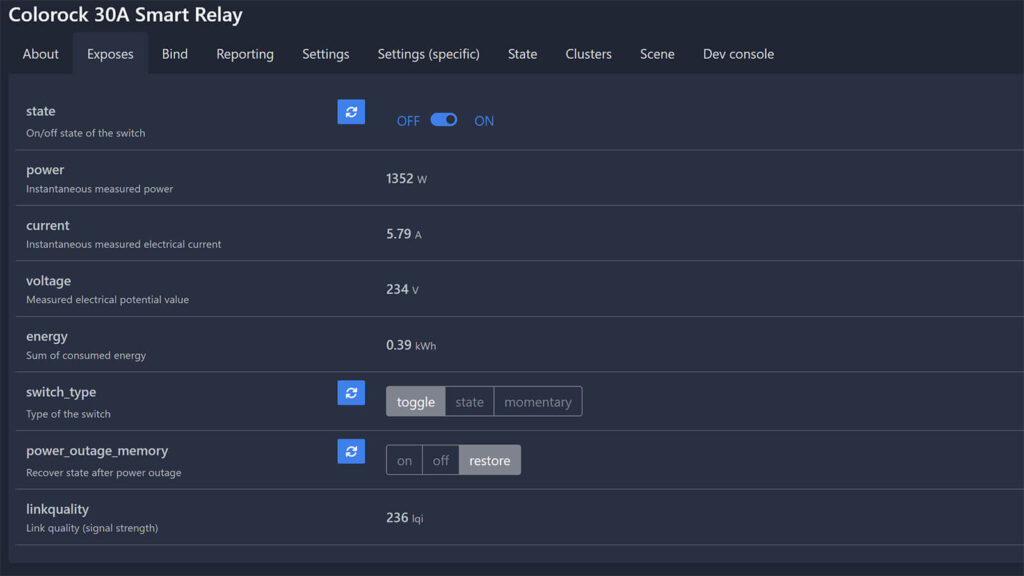
The basic equation for calculating power is P=V x I (W=VxA), which gives us 234v x 5.79a = 1354.86w. The reported value in Zigbee2MQTT is 1352w, which is a difference of less than 0.25%, incredibly accurate for a device of this type. If you need to calibrate the input voltage or current, you can do so in the Setting (specific) menu.
I had nothing in my office to push this relay to 30A, let alone 40A to match it’s installed relay. I managed to push it to a maximum of about 17A, by connecting a bunch of different things on a power strip. I opened up the plug and wired the strip directly to the relay, I didn’t even fully detach the plug from the wires. Here’s a photo (ugly, but works for testing purposes):
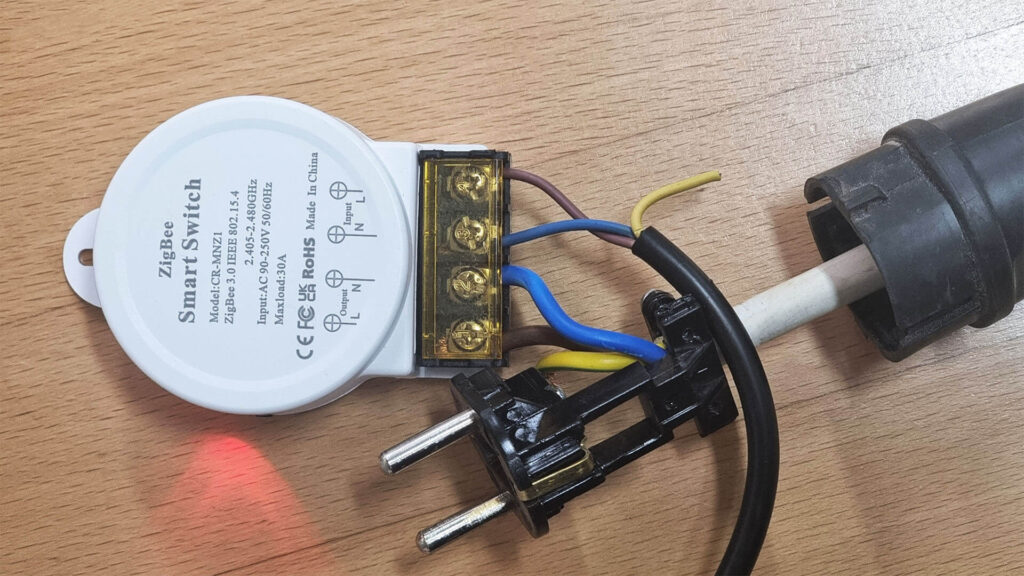
I plugged in the AC again, my high end PC with monitor, a printer, and a hot water dispenser that I had in the office. I made sure everything was turned on, and a benchmarking job (Geekbench) running on the PC:
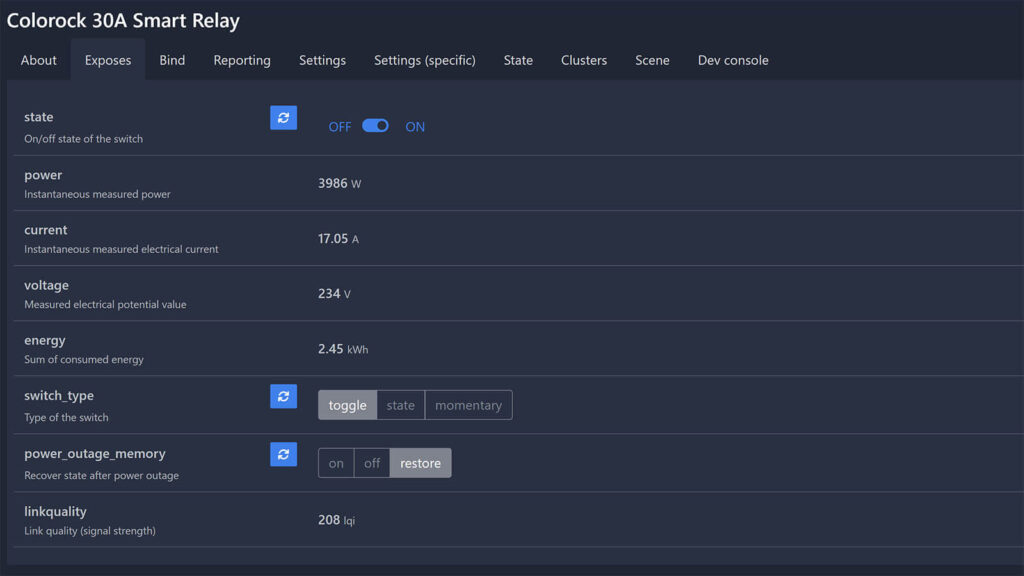
It gave me a reading of 3986w, which is 234v x 17.05a = 3989.7w again pretty close, an offset of 0.1%. The readings was naturally jumping up and down, as the devices drew different energy amounts in a given moment, but calculating the power draw a couple of times gave me about the same offset.
Verdict
This Colorock 30A Relay has kind of a specific use case: Monitor and Control High Power appliances or machines, such as tumble dryers, large freezers or fridges, heaters, anything within that 30A limit. They installed a 40A relay inside this device, possibly because of two reasons I can think of:
- For users intending to push the limits of the relay to 30A (highly unlikely), there is a 10A overhead for which the user is not aware of and can operate the device safely
- Supplying issues, 40A were easier or cheaper to get
In reality, the reason doesn’t matter as 40A is nice to have. When using the device, the relay is much louder than usual 10A or 16A relays you encounter in smart switches. In my experience, this is an indicator of good quality and that click gives me a certain peace of mind.
As far as Zigbee connectivity goes, It operated without issues in my two testing setups. Right now it’s connected to Conbee II + Zigbee2MQTT, reporting at around 250-255 LQI.
Pros
- Accurate Energy Meter
- High Power 30A Relay
- Actual Relay is 40A!
- Loud Clicking Relay (Indicator of good quality)
- No Communication Issues
- Zigbee Router
- Supported in Zigbee2MQTT and ZHA
- Cheap
Cons
- Invasive Wiring compared to a Smart Plug
- You might need to modify your appliance’s plug or add an extension power strip
Buy
You can buy the Colorock 30A Relay on AliExpress and some Amazon stores. This relay is also available in black, as a Wi-Fi or RF variant. The ecosystem for the Wi-Fi version is Tuya Smart Life, so I suggest going for the Zigbee version.
![]()
AliExpress | AliExpress | AliExpress (WiFi) | AliExpress (RF)![]()
United States | Canada | United Kingdom
Germany | Netherlands | Sweden | Spain
France | Italy | Poland | Australia
*If links fail to open, try disabling your AdBlocker.
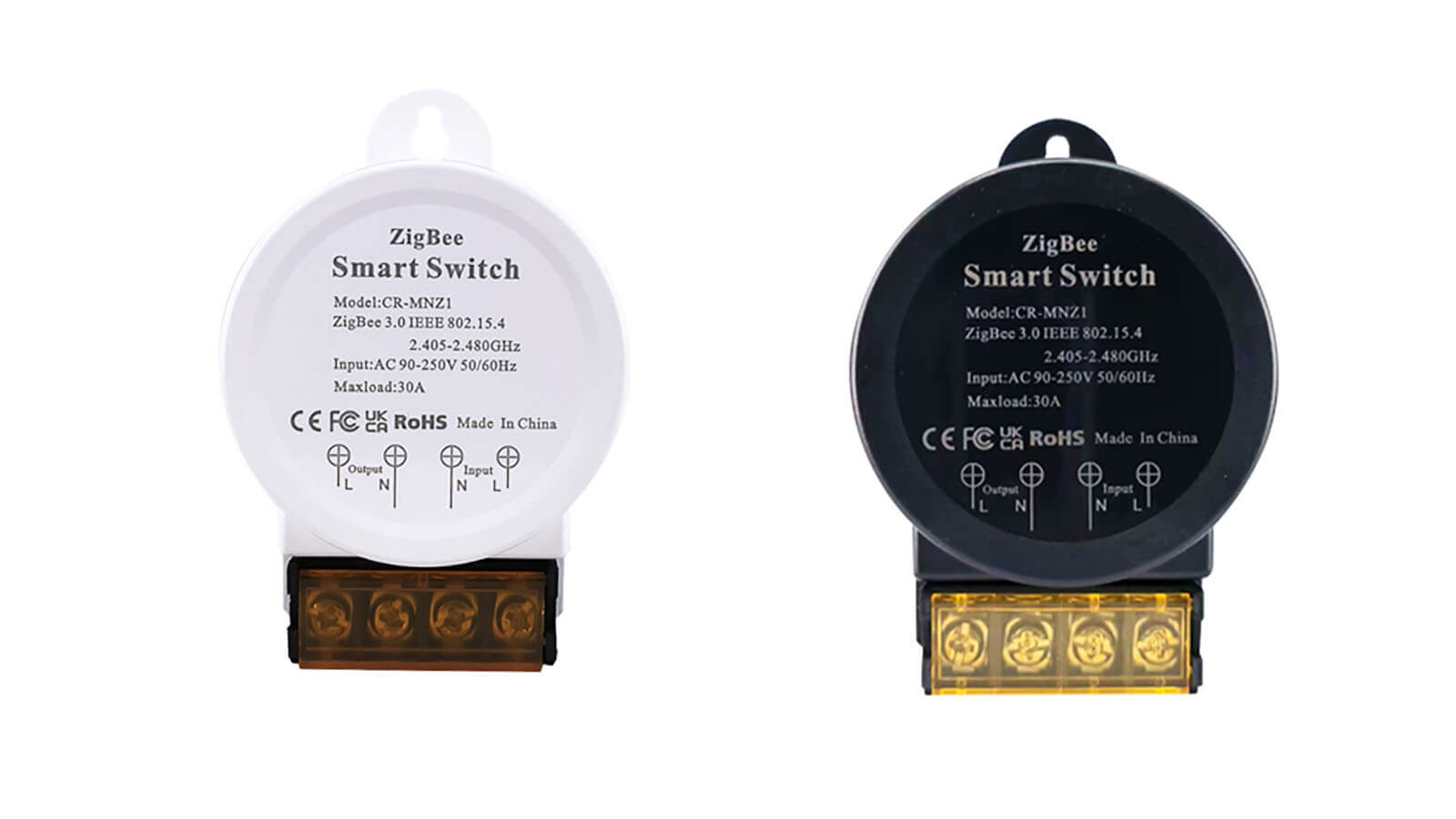
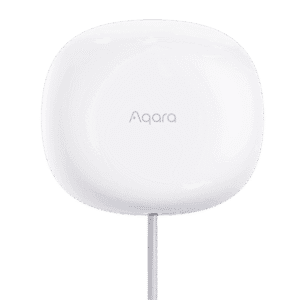
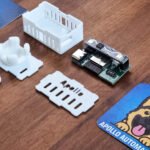

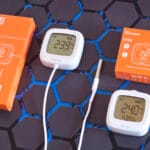
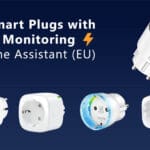

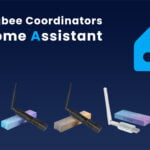
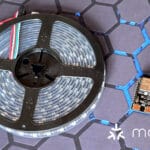

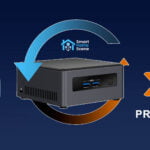
Thanks for sharing. Is this device safe so that no fire or other unexpected issues are unlikely to happen?
Hello Toja,
No one can guarantee such a thing.
I’ve shared everything I could about this device, so It’s best to do your own judgement.
Cheers.
If only I’d seen this before… I recently bought a Shelly EM with clamps and a contactor in order to switch our 20A water heater on and off in sync (and safely) with night time electricity prices. This device is a fifth of the price and would do exactly the same job as far as I can see.
I’m looking for something to stop the bathroom extractor coming on at night when the pull cord light is on. Could I install this between the light and the extractor fan and just have a automation in HA that toggles off overnight. ?
Yes you can, its powered by 100-220VAC so you will have no issues. If you need help with the wiring, shoot me an email admin@smarthomescene.com.
Cheers
Much appreciated. Loving the website as well.
The extractor fan has a timer so also needs an L1 switched live along with L + N can this still be used or do you have another recommendation ?
thanks
I am not sure I am getting you, but let me try:
L + N Input is where you wire the mains power.
L + N Output is where you wire the L1 wire going to your fan, which controls it. Note, your N output terminal will remain empty, because the neutral is already wired to your fan so you don’t need to wire it.
I hope I’m being clear.
I think it’s probably me confusing things.
Here is a link to a YT vid that shows exactly how the fan is wired
https://youtu.be/Bi34gxa_-Mk?t=151
thank you for this review.
Based on this description i bought a couple of these units to connect on our AC’s.
Unfortunately the power metering part in zigbee2mqtt only reports the voltage.. The power consumption values all remain at 0.
Do you know if i need to manually change setting in the zigbee2mqtt configuration for it to work like it did for you.
best regards,
Steven
No, not at all. Are you using the latest Z2M ver?
using z2m version: 1.31.2-1, which is the latest.
some device info from z2m :
-redacted-
Everything seems to be fine Steven, what is your AC rating?
Can you try attaching some other device for testing, something simple like a 100watt light bulb?
Let me know.
hi,
The AC has a max power draw of 8.8 amps. So it should be fine.
I did connect the AC to an other switch (different brand) with power monitoring capabilities which is currently operating like expected.
The light bulb idea sound like a plan.
I will try to make some time tomorrow to try that out with one of the other ones to eliminate te change the first one was just a lemon. (i bought a box full of them so i really hope to get the power metering working.
I was looking forward to using this. Unfortunately I couldn’t get the power monitoring to show in both ZHA and Z2mqtt. I’m not sure whether there are 2 different models of this.
It could be faulty though.
Thanks for the info.
thanks just purchased using you affiliate link ,
i usually use a site that give me a 2.5% discount but since your website is so usefull and well made , i thought i must “reward” you somehow
Thank you, this is appreciated.
I’m glad you find my content useful.
Cheers
Thanks for the review but there’s a minor issue at the bottom of the article. The second AliExpress link is for the switch WITHOUT power monitoring. Just a heads-up in case you want to change the link.
It’s still a good bit of kit but I wanted to use this for the socket in the front garden to calculate how much I spend charging the electric car. I’ll use this as a stop-gap to take the socket offline when I’m not using it and order the correct one.
Great review! Looked like just what I was looking for so I picked one up. What version of ZHA did you use? When I add it to ZHA 12.2 it doesn’t show any sensors and just shows up as a light with a switch. Maybe I am missing something but this device doesn’t seem to be plug and play with ZHA. I also have the ZG-001 that you reviewed and it’s like they have each other’s settings in reverse when compared to your reviews. When I tried to set up some automations with this device, my Home Assistant became unstable.
Hello Rod,
Update Home Assistant to the latest version, which will update ZHA too and the relay will work with no issues.
The ZG-001 only has a single entity, are you perhaps looking at the wrong device?
Automations have absolutely nothing to do with the devices you integrated, how are your running HA?
Hi, thanks for the reply. I updated to the latest ZHA which is running on a Raspberry Pi3B+ with a Sonoff Zigbee Pluse V2 Dongle. It’s very strange. I removed and re-added the ZG-001 and CR-MNZ1 and it is still the same. The ZG-001 device info says TS0001 by _TZ3000_0ghwhypc and is using the zhaquirks.tuya.ts000x.Switch_1G_Metering and shows as a switch with 4 sensors (current, power, summation delivered and voltage. The CR-MNZ1 device info says TS0001 by _TZ3000_aghwaexm with no sensors and no quirk, which is the reverse of what I see in your reviews of the products. I’ve confirmed that I’m looking at the right devices by toggling them on and off and verifying them visibly. I agree that automations shouldn’t have anything to do with it but when I implement them to turn the GR-MNZ1 on overnight and off during the day, HA becomes unstable and I’m no longer able to remotely control any of my devices until I remove the automations and reboot.
I just remembered, the Colorock 30A Relay Switch is also available without energy metering capabilities.
So this is probably why you don’t see the energy clusters exposed to Home Assistant, you have the switch-only version.
The energy version is identified as _TZ3000_tgddllx4, an identifier different than yours.
As for the instability this causes, It goes against everything I know about HA and Smart hardware.
It should NOT cause ANY issues whatsoever to the OS just by creating automations.
Perhaps the RPi3 is underpowered? Perhaps you are using an SD Card and it has just reached it’s limit?
Perhaps your power supply is failing you (known issues with RPis)?
There can be many reason mate.
OK, thanks, I wasn’t aware of that. I would have thought the model number (CR-MNZ1) would be different if there were different capabilities. Good point about the instability issue.
I will have to investigate the instability issue further. Thanks again.
On their aliexpress link, it clearly says you have to update its firmware using genuine tuya hub, otherwise energy monitoring will not work. Can you confirm this? Can we update its firmware and disconnect it from tuya and put it back on HA?
Yes, you can update it with a Tuya hub and use it Home Assistant via ZHA/Zigbee2MQTT.
Although its not necessary, it’s most likely bug fixes so why not.
I don’t even own a Tuya hub.